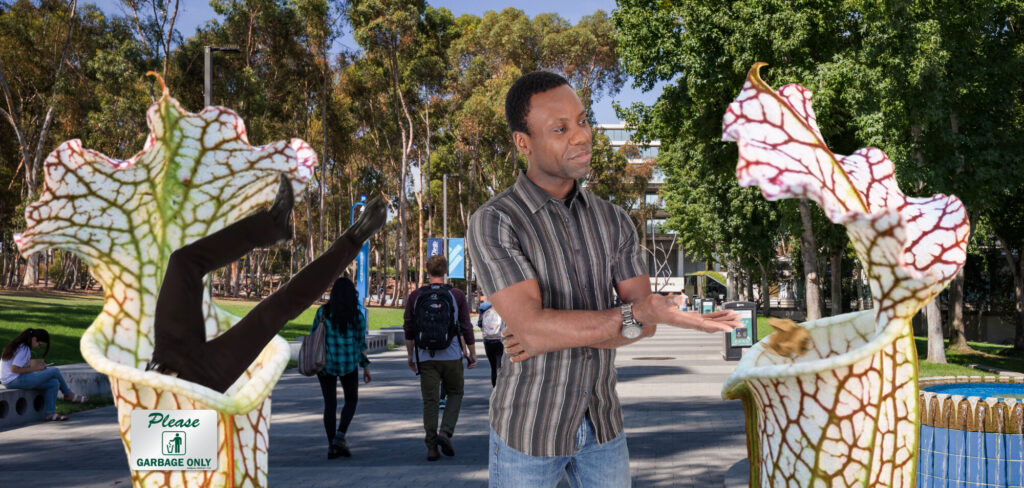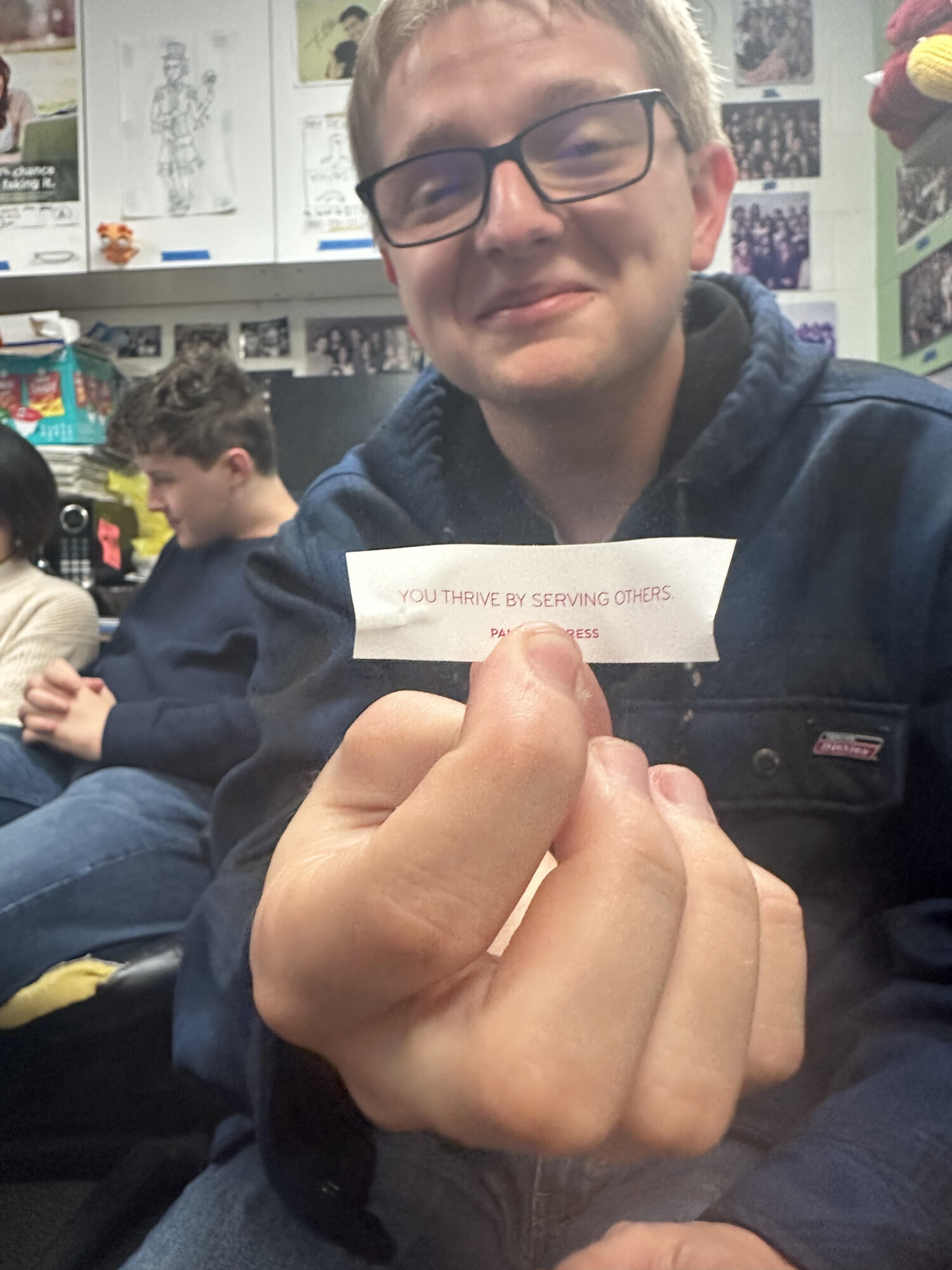
“I’m too smart to fall into a pitcher PLAAAAAAAAAAANT!” said one student.
Photo by Jordan Whitlow
After a record number of students were offered on-campus housing through Chancellor Khosla’s Strategic Plan, wildlife has habituated to the increased human activity. To this, UC San Diego Facilities Management recently reported that the campus raccoon population had become “difficult” to control. Aggressive behavior from the raccoons had been preventing students from properly disposing of their garbage, which according to Raccoon Regent Leicester Lotwin, only further reinforced their territory. “These poor students can’t even reach their dining halls without getting ransacked by the scourge of stripes… Well how else would you explain the plates stacked on top of all those trash cans?”
Following reports of dumpsters overrun with animals, Facilities Management sought the help of UCSD’s Genetically Modified Organism (GMO) laboratory for a permanent solution. Over the three weeks of winter break, funding was funneled from the environmental sciences budget towards developing what became known as Project Audrey Geisel II.
The first crop of genetically modified pitcher plants were seeded along all major walkways on campus. They reach heights of nine feet, can digest a raccoon-sized mass of biomatter in the span of an 80-minute lecture, and grow in two colors: military camo and wine-dark sea. “Regarding the ‘bio’ of biomatter,” commented principal investigator Stef Biolosky, “the plants honestly make quick work of anything that passes their slippery rims.” Students were seen disposing candy wrappers, rubber tires, and the rest of their refuse in a newfound compost wave. “We’ve killed two birds with one stone, except the birds are problems, and the stone is a solution. A caustic solution! How’s that for show?”
After a successful week of operations, however, Facilities Management suddenly faced an overgrowth of FixIt tickets. Juvenile pitcher plant specimens were found sprouting from garbage disposal drains and shower heads, and multiple students have needed to be extracted after falling into cavities. “We’d been doing our best to resolve these incidents on our own, but we just didn’t have enough resources nor the manpower. Even I came down to pitch in, pun intended.” Lotwin wrenched a crowbar from the mouth of a plant after having used it to pull out a bystander. “But you know who can provide the funds?”
Financial reserves are now being diverted from all science departments towards the GMO team. Multiple projects are being tended to that seek to develop species that can consume pitcher plants with equal efficacy: the most promising include dire raccoons that are “meaner, perhaps greener;” hand sanitizer that kills 100% of germinators; and an experimental roster of UCSD baseball players who have resistance to acid and nonmagical bludgeoning, piercing, and slashing damage and can “knock them damn pitchers out of the science park.”
Those on campus have proclaimed that these invasive species have replaced the root problem with larger ones. Fourth-year Environmental Chemistry major Alder Diel explained, “They’re fighting their own fire with fire! I’m the one caught in this little school of horrors out here, dodging hulked out raccoons and radioactive fastballs left and right. And the plates are still stacking up outside 64 and Pines. Are we sure it was because of the animals to begin with?”
“What plates?” Biolosky asked, climbing out of the half-melted remains of an Audrey Geisel II. “I was only told about vermin that needed to be neutralized, so we did it with the pitcher plants. When folks started to moan about those, we produced even more solutions. We only ever produce solutions! And jobs! And above all, we’re doing this because we can.”











